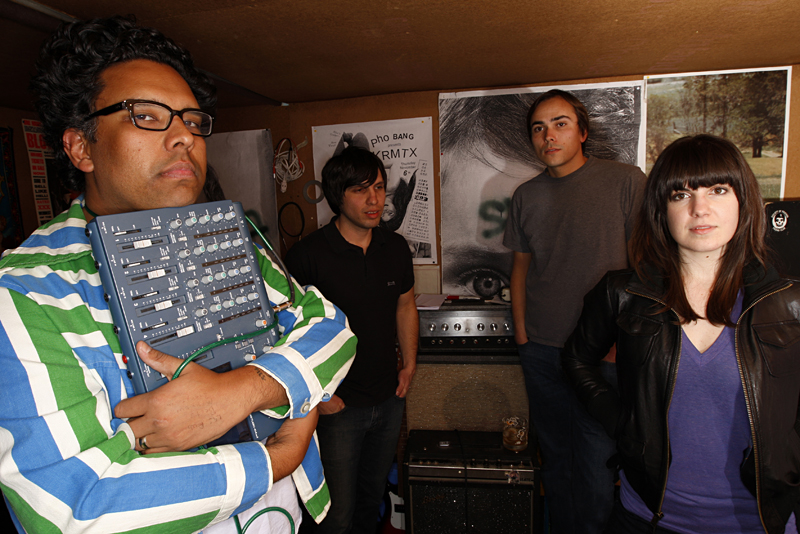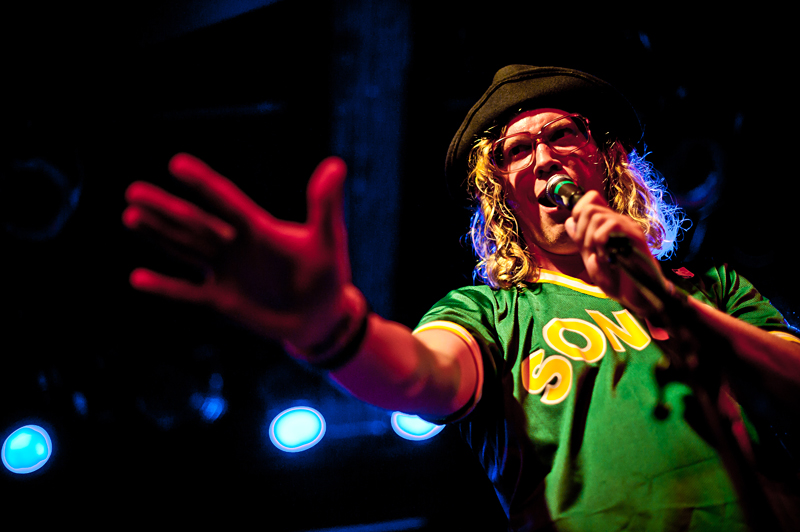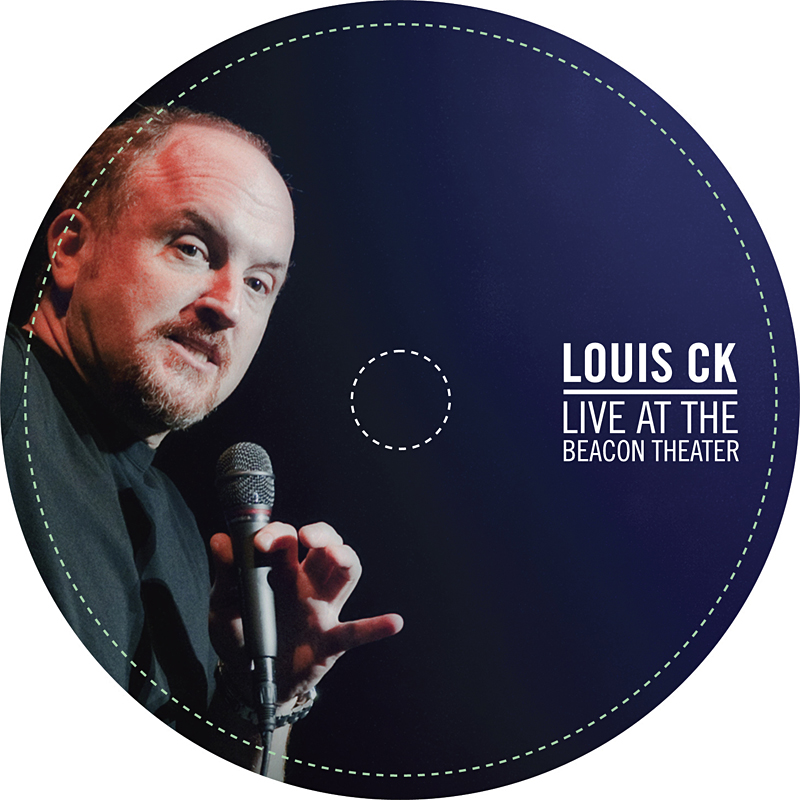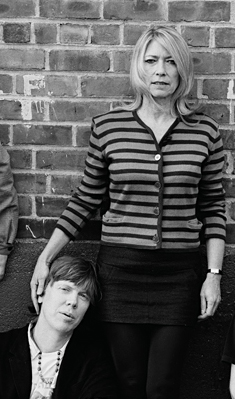The drums begin their steady stomp—thud . . . thud-thud-smack! The beat echoes off the walls alongside a jangle of tambourine, each beat swan-diving onto a dusty mattress of reverb. The whole sound is as enchanting and familiar as a Lesley Gore or Ronettes single, a ’60s-inspired song built on Phil Spector–ish pop orchestration matched with the uncluttered directness of ’50s garage.
At first listen, “Never Come Around”—the first single from La Sera, the side project of Vivian Girls’ Katy Goodman—sounds nothing like the type of song to come out of present-day Seattle. Yet the Brooklynite recorded it right here in town, in a home owned by the album’s producer Brady Hall; made La Sera’s live debut here; and released the project’s self-titled debut on Seattle’s Hardly Art Records, the scrappy Sub Pop subsidiary. This isn’t an aesthetic that’s dominated the popular sound in Seattle—or across the nation—in years.
If you took a quick barometric reading of indie tastes, you’d find they have more in common with adult-contemporary listeners than with the stripped-down, risk-taking approach the “indie” genre was founded upon. Seattle acts are no exception. Local pop acts such as Telekinesis and the indie-folk constituency surrounding The Head and the Heart are churning out clean, delicately produced affairs.
“Seattle is still clinging to overproduced sounds,” says Ruben Mendez, a radio, retail, and A&R man for Hardly Art. “It’s easier on the ears, and that’s what most people want to hear. But it’s not just like that here. It’s like that all over.”
Yet Seattle might be (to evoke Mudhoney) marching back to fuzz. While the garage-y aesthetic has been quietly championed here since forever, a number of bands shuffling around town peddling fuzzy, homemade 7-inches made with low-budget recording equipment on a 4-track in their bedroom are beginning to have their moment. Seattle-via-Oklahoma newcomers Seapony received glowing writeups for their hazy, fuzzed-out pop on Pitchfork before they ever signed a record deal. And Brian Standeford and Charles Leo Gebhardt IV, former members of the Catheters and the Tall Birds, are marrying ’80s art-punk to ’60s garage rock in their group Idle Times. Even TomTen, the band that won this year’s Sound Off! competition, boasts a heavy dose of British Invasion rawness.
And there’s the matter of Hardly Art, which is releasing Seapony’s debut, Go With Me, next month, and is quickly establishing itself as a national go-to for no-bullshit musical aesthetics, following a string of stellar recent releases bearing a wide range of fuzzy, garage-y, homemade sounds. The psych-throb of Woven Bones, the ’60s garage swagger of Jacuzzi Boys, and the airy, lovelorn pop of La Sera have made Hardly Art a place for bands distinguished by songcraft rather than studio wizardry. This has been an ideal of Hardly Art since it opened shop in 2007; its first release, Arthur & Yu’s In Camera, was drenched in a ’60s analog haze, while The Dutchess & the Duke recorded its raw, Stones-y 2008 debut in a West Seattle basement.
“I’m personally more drawn to music with that [lo-fi] aesthetic,” says Hardly Art president Sarah Moody. Of course, Moody stresses that fitting into that aesthetic is not the deciding factor in choosing which bands to sign—after all, Hardly Art is home to ’70s roots rockers the Moondoggies and the peppy, bookish pop of the Pica Beats. But it’s impossible to look at Hardly Art’s roster at the moment and not see something great and gritty taking shape; the label could become what Sub Pop was in its prime—known for a certain sound, look, and set of musical values.
Since joining the Hardly Art staff in 2009, Mendez has brought several artists to the label, including Woven Bones, Jacuzzi Boys, and Fergus & Geronimo. For the most part, they’re all bands he’d become familiar with either on the road as a touring musician or as a buyer for Sonic Boom. As with any good A&R man, these artists all share his liking for the handmade recording process and fuzzier, grittier sounds.
Moody and Mendez say the decision to record in a stripped-down way usually stems from two simple reasons: The bands can’t afford proper studio time and/or they simply prefer the homemade results of home recording—reasons which were the historical foundations of the back-to-basics approach to begin with. The Rolling Stones, for example, early on wanted to match the rawness of Muddy Waters records, which sounded the way they did because of Chess Records’ low-budget studio setup. “I think [the lo-fi sound] also kind of helps bands stand out from the pack a little bit,” Moody adds.
This is certainly true of Seapony, a trio making bare-bones pop in the Young Marble Giants vein. Seapony’s jangly rhythms and airy vocals are certainly in line with Seattle’s tastes at the moment, and there’s little doubt Seattleites will be drawn to them as they were to Arthur & Yu. But where Arthur & Yu’s songs were composed and structured, Seapony’s are delivered with a wiry, cassette-tape scuff harking back to ’80s indie pop, a la Sarah Records and C86.
Mendez says the music-buying public is really more interested in a good song than in how it was produced, but that often a simpler recording fosters a deeper intimacy between listener and song, one harder to achieve with overproduced records.
“I would love to sound sleek and polished,” says Seapony’s Danny Rowland. “However, when we got the opportunity to put out a full-length, we decided not to go back and re-record tracks. We actually tried, just as an experiment, to re-record “Dreaming,” but it had lost some of its magic and charm.”
“People want that humanity,” says Mendez.








